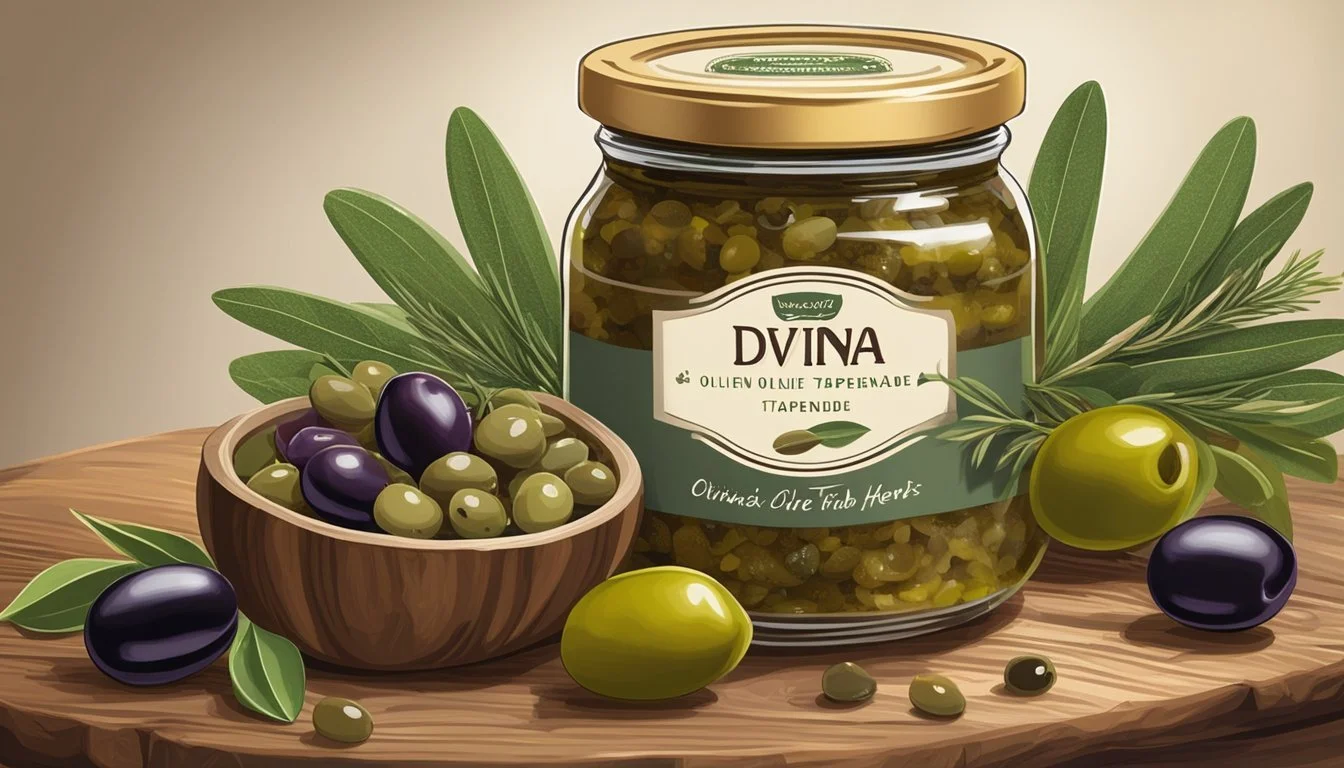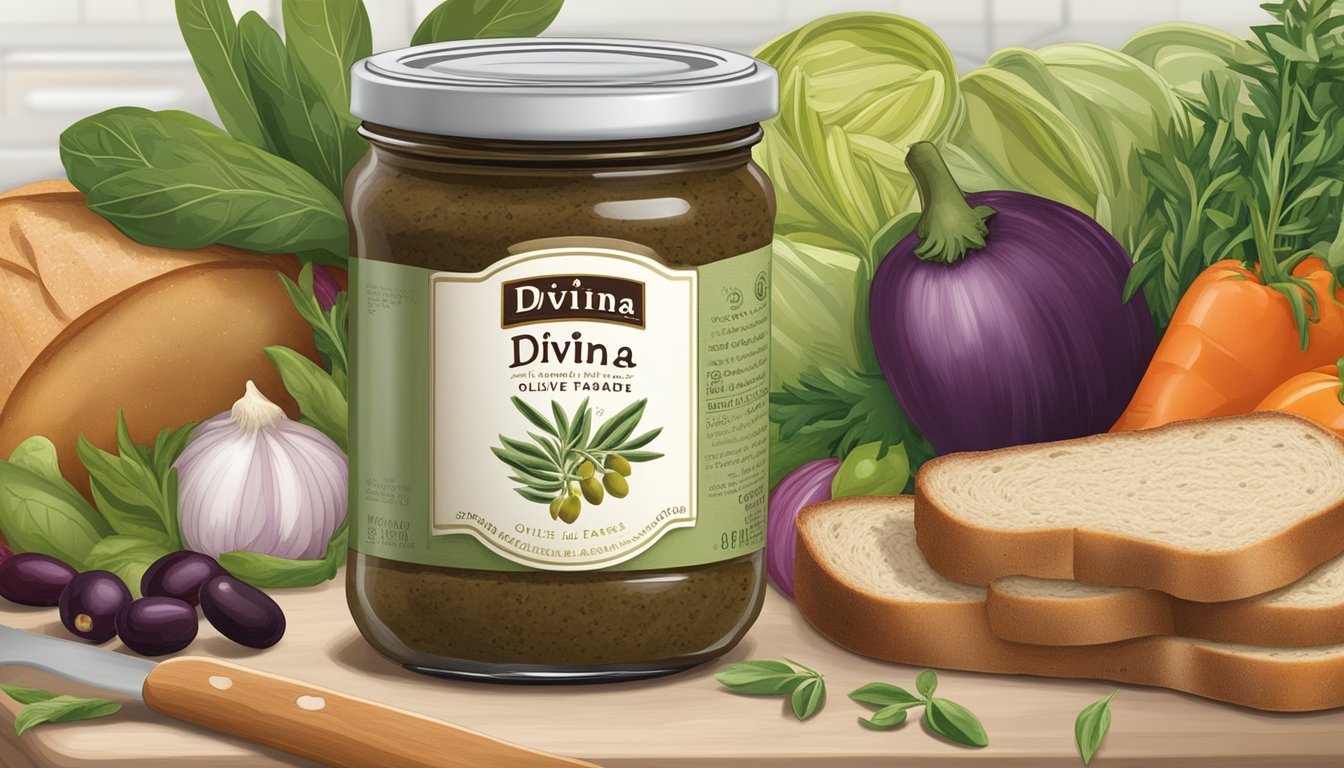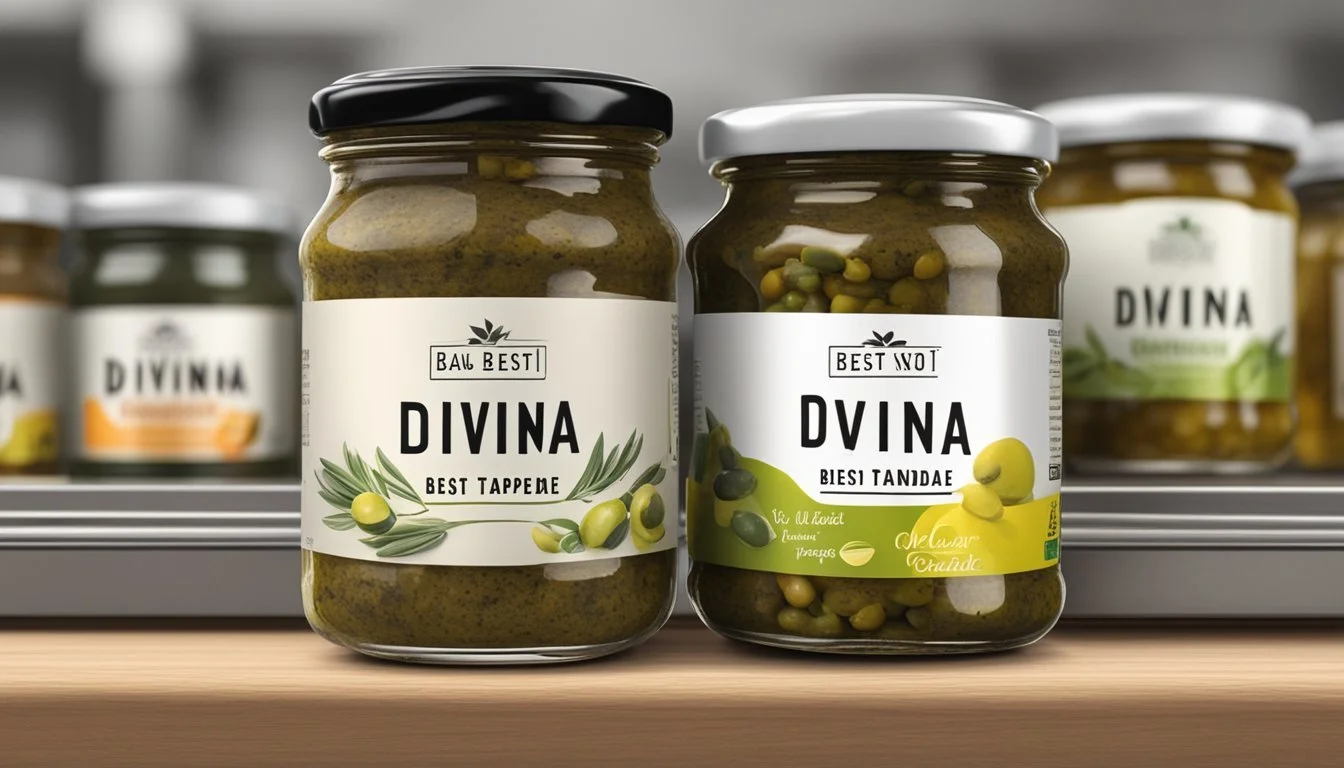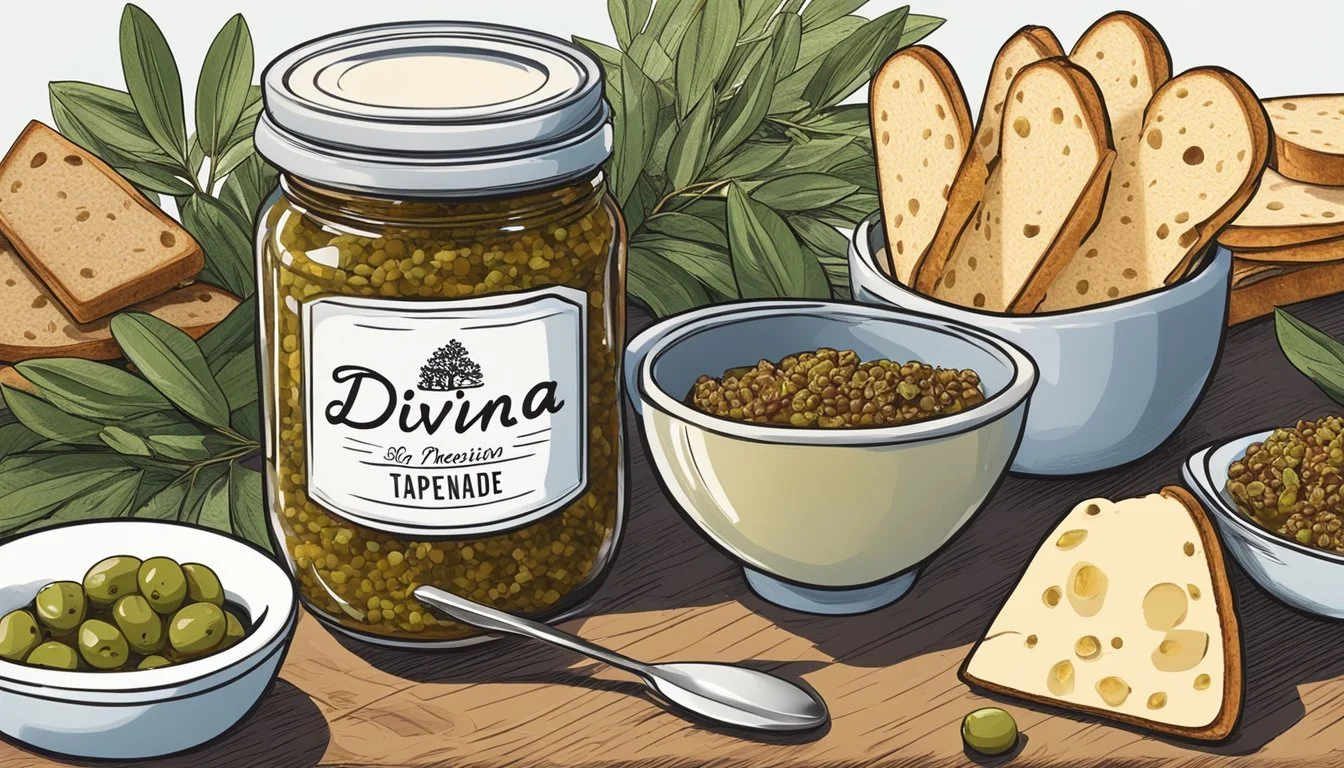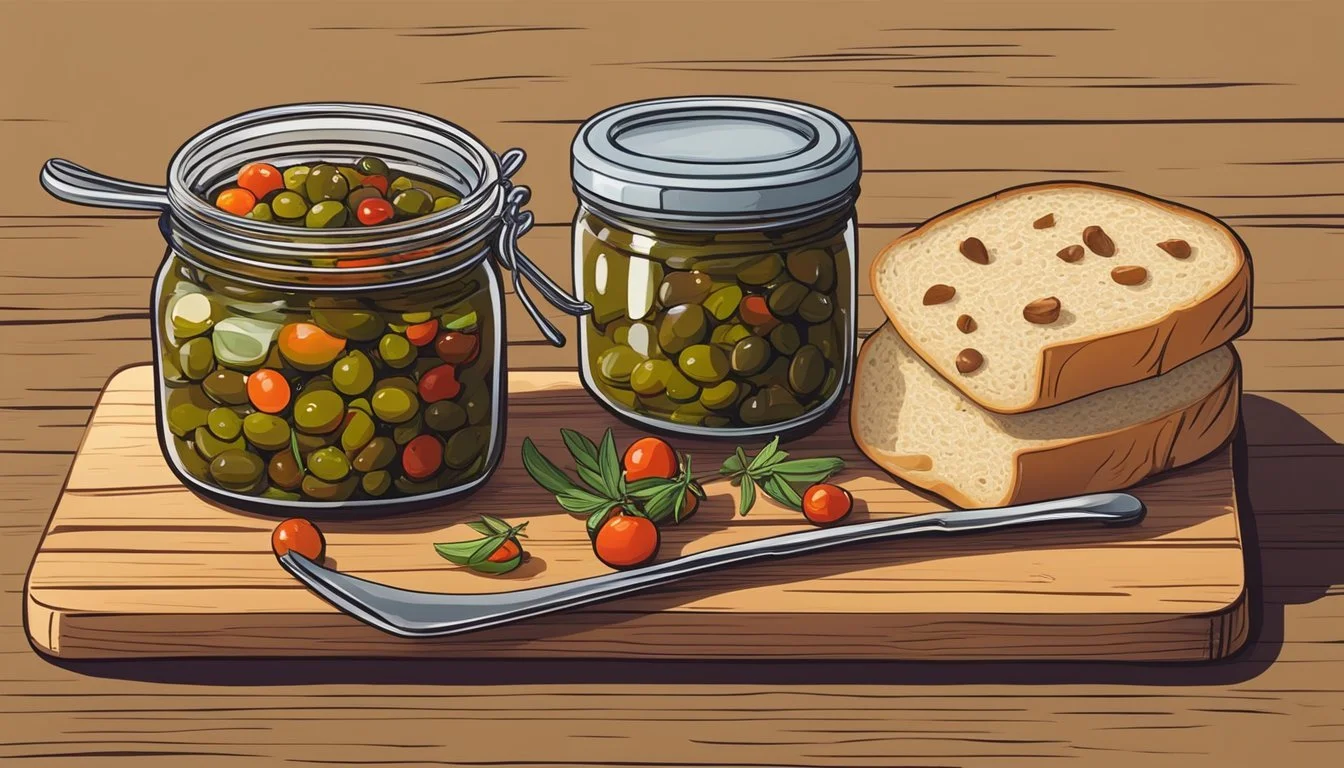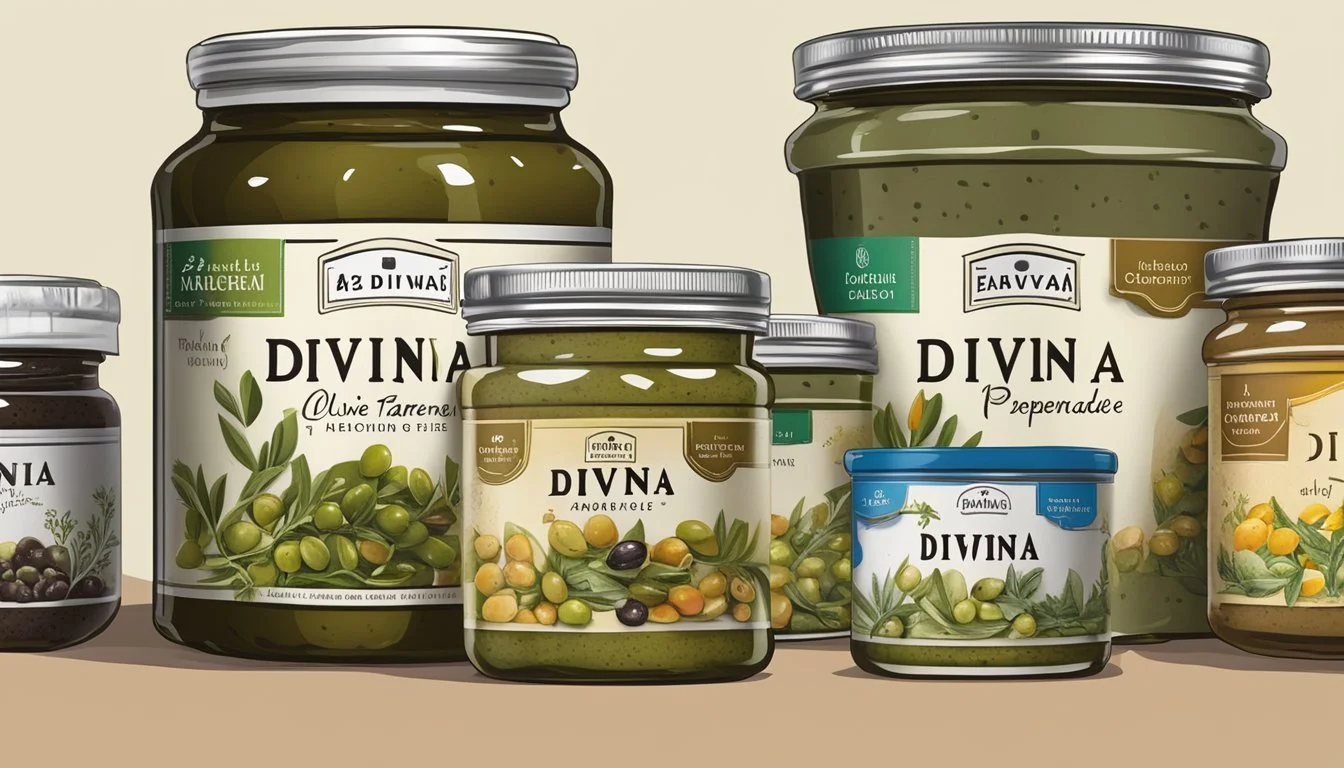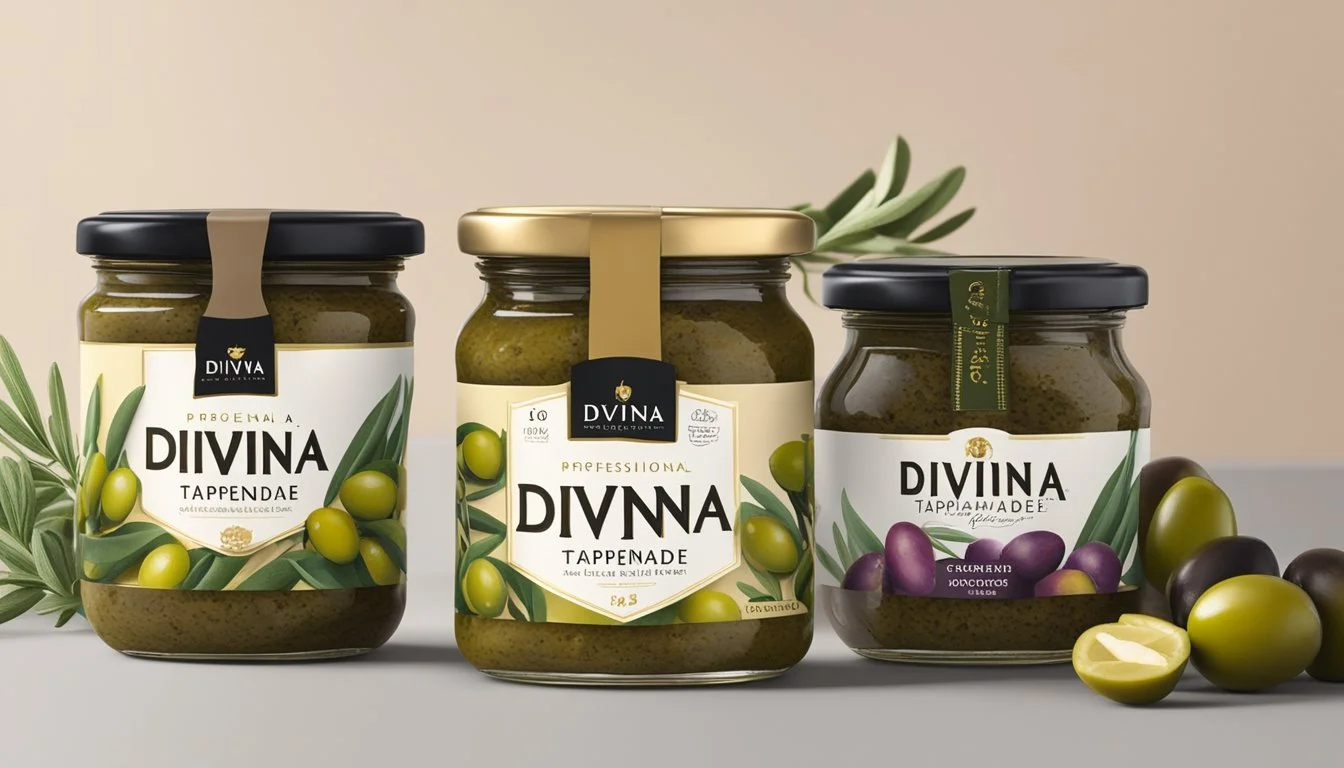How Long Does Divina Olive Tapenade Spread Last?
Shelf Life and Storage Tips
Olive tapenade is a popular Mediterranean spread renowned for its rich, savory flavor and versatility in the culinary world. This spread primarily composed of olives (What wine goes well with olives?) —oftentimes Kalamata—blended with ingredients like capers, (What wine goes well with capers?) anchovies, (What wine goes well with anchovies?) and olive oil, adds a briny depth to dishes. Divina, a brand known for its gourmet products, offers a version that captures the traditional essence of this flavorful condiment. When it comes to shelf life, the longevity of olive tapenade is a topic of interest for both food enthusiasts and practical homeowners alike.
The shelf life of Divina olive tapenade, like other brands, depends on several factors including storage conditions and whether the jar has been opened. Typically, an unopened jar of tapenade can last well until the printed expiration date when kept in a cool, dry place. Once opened, it should be refrigerated to preserve its freshness. Under proper refrigeration, it generally maintains good quality for several weeks. Indicators of spoilage include off-odors, changes in texture, or visible mold, which would signal that the spread should no longer be consumed.
What Is Olive Tapenade?
Olive tapenade is a flavorful spread predominantly made from finely chopped or pureed olives, capers, and olive oil. It often includes additional ingredients such as garlic and anchovies to enhance its distinct taste.
Historical Background
Olive tapenade has its roots in the Mediterranean region, dating back to the Roman era. The Italians are credited with the earliest written recipe of this spread, which has evolved into a staple of Mediterranean cuisine. Tapenade derives its name from the Provençal word for capers, "tapenos," indicating the spread's deep connection with regional culinary traditions.
Key Ingredients
The signature profile of tapenade relies on a simple yet precise combination of ingredients:
Olives: Usually, the base is made from kalamata olives, valued for their rich, fruity flavor.
Capers: These add a tangy, lemony burst, balancing the intensity of the olives.
Olive Oil: Extra virgin olive oil is generally used for its smooth texture and peppery notes which bind the ingredients together.
Garlic: Acts as a pungent additive that complements the robust flavors of the mix.
Anchovies: While not always present, they contribute a savory depth when included.
Each component is carefully selected to create a harmonious blend that is as versatile as it is delicious, serving as a spread, dip, or condiment.
Health and Nutrition
Divina Olive Tapenade Spread incorporates a blend of olives, capers, and spices, yielding a condiment that can contribute to a balanced diet. Its ingredients provide certain nutritional benefits, while dietary considerations should be noted for informed consumption.
Dietary Considerations
Divina Olive Tapenade Spread is rich in olives which contain fat, though primarily the monounsaturated kind, which is considered a healthier fat option. Consumers should be mindful of portion sizes and calorie content; tapenade can be calorie-dense, so it's prudent to enjoy it in moderation. For individuals with dietary restrictions, it is important to note that this spread typically contains anchovies (a fish product) and capers, which may not be suitable for all diets, particularly vegan or certain vegetarian practices.
Nutritional Benefits
In terms of nutrition, Divina Olive Tapenade Spread offers several benefits:
Fiber: Olives, a primary ingredient, provide dietary fiber, which is important for digestive health.
Iron: Olives also contain iron, which is vital for transporting oxygen in the blood.
Here's a quick overview of the nutritional elements in a typical serving of tapenade:
Nutrient Benefit Dietary Fiber Supports digestive health Iron Essential for oxygen transport Monounsaturated Fats Considered a healthy fat source
This spread can therefore be a flavorful addition to a healthy diet when used in appropriate quantities.
Culinary Uses
Divina Olive Tapenade Spread boasts versatility in culinary applications, ranging from traditional dishes to innovative pairings that enhance the flavors of any meal.
Traditional Uses
Divina Olive Tapenade is traditionally enjoyed as an appetizer. It can be served on a slice of crusty baguette or artisan bread to bring out its briny and rich flavors. This Mediterranean spread is also well-suited as a sandwich spread, adding depth to the taste profile of various sandwiches. Additionally, it is a flavorful addition to pasta dishes, providing a burst of savory Mediterranean flair.
Appetizers: (What wine goes well with appetizers?) Serve with crostini or crackers.
Sandwiches: Spread on bread for Mediterranean-style sandwiches.
Pasta: Stir into pasta sauces for an umami boost.
Creative Pairings
Beyond its traditional uses, Divina Olive Tapenade can be a gourmet addition to pizza, replacing or enhancing the traditional tomato sauce with its complex flavors. For a vegan option, it can elevate vegetable dishes or vegan pizza with its savory notes. Chefs often incorporate the tapenade in inventive ways, from flavoring roasted vegetables to garnishing a savory tart.
Pizza: Use as a base sauce or a topping for an extra flavor layer.
Vegan Dishes: Enhance vegan pizzas or roasted vegetables.
Storing Olive Tapenade
Proper storage extends the freshness of olive tapenade, a Mediterranean olive spread. Refrigeration is essential once opened, and freezing can be an option for longer-term keeping.
Refrigeration Guidelines
Once the seal of the Divina Olive Tapenade Spread is broken, one should promptly place it in the refrigerator. The cool environment of the fridge is crucial for maintaining the spread's quality. An opened jar of tapenade should be kept in the fridge at temperatures around 35-40°F (1.7-4.4°C), ideally in a tightly sealed container to minimize exposure to air.
Ideal Fridge Storage Temperature: 35-40°F (1.7-4.4°C)
Container Type: Airtight container
Freezing and Long-Term Preservation
While freezing is less common, it is possible to freeze olive tapenade for extended storage. To ensure the best quality, one should divide the tapenade into usable portions before freezing.
Freezing Method: Portion tapenade into ice cube trays or small containers, wrap with plastic wrap, and place in freezer bags.
Thawing Instructions: Thaw overnight in the refrigerator before use.
Note: Freezing may affect the texture of the tapenade due to the high oil content, but it will preserve the flavor for future use.
Shelf Life
When considering the shelf life of Divina Olive Tapenade Spread, there are two primary stages to consider: before opening the jar and after it has been opened. Each stage has its storage recommendations to ensure the product remains at its best quality for consumption.
Unopened Jars
An unopened jar of Divina Olive Tapenade Spread has a guaranteed shelf life of 12 months. Customers can find the exact expiration date printed on the top of each jar. During this period, the tapenade should be kept in a cool, dry place away from direct sunlight.
After Opening
Once the seal of a Divina Olive Tapenade jar is broken, its longevity diminishes. It is recommended to consume the product within 2-3 weeks after opening. To maintain freshness, the opened jar must be stored in the refrigerator with the tapenade fully submerged in its natural brine or oil. This practice slows down the degradation process, helping to preserve the spread's quality.
Tips for Enjoying
When indulging in Divina Olive Tapenade Spread, the key is to pair it with complementary items that enhance its rich flavors and to be creative with its application in recipes.
Serving Suggestions
One might relish this spread as:
As an Appetizer: Serve the tapenade on a platter with a variety of crackers, crostini, or fresh bread. Add a sprinkle of thyme for an aromatic touch.
With Proteins: Enhance the flavor of grilled chicken or fish by adding a dollop of the olive spread; the lemon zest can brighten the dish.
For a simple yet sophisticated snack, try topping cucumber slices with tapenade and a caper garnish for a salty pop.
Recipe Ideas
Innovative ways to include Divina Olive Tapenade Spread in meals:
Tapenade Pasta: Stir the spread into warm pasta, along with garlic, black pepper, and a squeeze of lemon juice.
Mediterranean Bruschetta: Mix the tapenade with chopped tomatoes, thyme, and a bit of feta cheese, then spoon onto toasted bread.
A review of these suggestions reflects the versatility of Divina Olive Tapenade Spread, ensuring that one can enjoy it in multiple ways, whether it's incorporated into recipes or used as the star of a dish.
Homemade Tapenade
Creating a homemade tapenade allows for a fresh, customizable spread, a delightful addition to any appetizer selection. Careful blending of ingredients is crucial to achieve the perfect texture and flavor balance.
Making Your Own
One begins by assembling the necessary components in a food processor. For a basic tapenade, one typically combines pitted olives, capers, garlic, and anchovies, adjusting the quantity to taste. Lemon juice can be added for brightness, while olive oil gradually emulsifies the mixture when pulsed together. The goal is a coarsely chopped mixture, rather than a smooth puree, to preserve the tapenade's characteristically rustic texture.
Ingredient Variations
For those looking to experiment with flavors, variations abound. Basil or parsley can lend fresh, herbal notes, while a splash of cognac adds a layer of depth. Orange zest offers a citrusy twist, complementing the olives' brininess. Some may opt to roast garlic cloves in the oven before blending for a smoother, milder garlic flavor. The recipe can be tailored to one's palate, suggesting a truly personalized spread.
Remember to store your homemade tapenade in an airtight container in the refrigerator, where it can be enjoyed for up to 4 days, ensuring its freshness and optimal flavor.
Safety and Allergens
Ensuring safety and managing allergens are critical aspects of food consumption, especially when enjoying products like Divina Olive Tapenade Spread.
Common Allergies
Olive tapenade often includes anchovy, which is a significant allergen for those with fish allergies. It’s vital to check the ingredients list if one is allergic to fish. Tapenades can also contain gluten if additives or thickeners are used, but Divina Olive Tapenade is typically gluten-free, catering to those with gluten sensitivities or celiac disease. Moreover, despite the common misconception, olives and olive oil are cholesterol-free, making tapenade a suitable option for those monitoring their cholesterol intake.
Safe Handling Practices
It is important to handle olive tapenade safely to prevent foodborne illnesses:
Refrigeration: Once opened, olive tapenade should be stored in the refrigerator to slow down the growth of harmful bacteria.
Seal Properly: Always reseal the container tightly after use to prevent contamination.
Use Clean Utensils: To avoid cross-contamination, it’s imperative to use clean utensils when serving the tapenade.
Discard if in Doubt: If the tapenade exhibits any signs of spoilage, such as an off smell or visible mold, it should be discarded immediately.
Buying Guide
When selecting an olive tapenade spread, it's essential to consider the quality of its components and understand the product labeling to ensure freshness and flavor.
Selecting Quality Products
To choose the best olive tapenade spread, one should focus on the type and quality of the olives used, as these are the main ingredient. They should look for specific varieties such as Kalamata olives, green olives, or Castelvetrano olives, recognizing that each type contributes a distinct flavor profile. Additionally, the olive oil used is a critical factor; ideally, extra virgin olive oil is preferable for its robust flavor and quality. When inspecting the product, its color and texture are indicators of quality – vibrant color and a consistent texture without signs of separation suggest a well-made tapenade.
Label Interpretation
Understanding labels is important for gauging the freshness and longevity of an olive tapenade spread. One should look for key information such as:
"Best By" or "Use By" Dates: These provide guidance on the product's peak quality period.
Ingredients List: Quality tapenade contains whole food ingredients like olives, olive oil, and potentially capers or garlic without unnecessary additives.
Packaging Date: If available, this can provide insight into how long the product has been on the shelf.
Storage Instructions: Following the recommended storage guidelines will ensure the tapenade remains fresh.
Through careful selection and educated label interpretation, one can choose a fresh and flavorful olive tapenade spread that will be a delightful accompaniment to any meal.
Comparison With Similar Products
When determining the shelf life of Divina olive tapenade spread, it's beneficial to compare it with related products. The preservation methods and ingredients in each significantly influence how long these spreads will maintain their quality and freshness.
Tapenade vs Pesto
Tapenade, traditionally composed of olives, capers, and anchovies, has a relatively long shelf life due to the preserving properties of salt present in olives and capers. Once opened, a jar of tapenade stays fresh when kept refrigerated and can last several weeks due to the high oil and salt content, which deter spoilage.
Pesto, on the other hand, usually consists of basil, pine nuts, Parmesan cheese, garlic, and olive oil. This olive spread variant has a shorter refrigerator shelf life than tapenade because the fresh basil and cheese can degrade more quickly. Typically, an opened jar of pesto should be used within 5 to 7 days for best quality.
Table 1: Refrigerated Shelf Life Comparison
Spread Refrigerated Shelf Life (Opened) Tapenade Several weeks Pesto 5 - 7 days
Tapenade vs Hummus
Hummus, a Middle Eastern favorite made primarily from cooked, mashed chickpeas, tahini, oil, lemon juice, and garlic, also differs from tapenade in terms of shelf life. Hummus often contains less oil and no preservative ingredients like salty brines or acids, which gives it a shorter refrigerator shelf life compared to tapenade. Generally, an opened container of hummus should be consumed within about 7 days.
Table 2: Refrigerated Shelf Life Comparison
Spread Refrigerated Shelf Life (Opened) Tapenade Several weeks Hummus About 7 days
Both pesto and hummus contain higher amounts of perishable ingredients and fewer preservatives than tapenade, which contributes to their shorter lifespan after opening.
Serving Equipment
When serving Divina Olive Tapenade Spread, having the right equipment enhances the overall experience by ensuring the tapenade is easily accessible and aesthetically appealing. Proper utensils and presentation techniques can elevate a simple appetizer to a memorable part of any dining event.
Must-Have Utensils
Spreaders: A set of small, sturdy spreaders are essential for guests to apply tapenade onto their chosen base.
Knives: Cheese knives can be handy if serving the tapenade on a charcuterie (What wine goes well with charcuterie?) board, as they allow for clean cuts of accompaniments.
Spoons: Small spoons are useful for guests who prefer to spoon the spread onto crackers or crudité.
Tongs: If serving alongside a mezze platter or charcuterie board, tongs allow guests to select other items without cross-contamination.
Presentation Tips
Charcuterie Board: Incorporate the tapenade into a charcuterie board with a designated section for the spread to avoid it mingling with other flavors.
Crostini Arrangement: Pre-spreading tapenade on crostini and arranging them on a platter emphasizes ease of serving.
Crudité Selection: Offer a colorful array of vegetables alongside the tapenade for a fresh and appealing contrast.
Mezze Platter Complement: When included in a mezze platter, place the tapenade in a small bowl with a spoon to maintain its distinct taste amidst the variety.
Legal and Privacy
In discussing the shelf life of Divina Olive Tapenade Spread, it is essential to address legal disclaimers regarding the product's longevity and the handling of consumer data, particularly in the context of privacy policies and email communications.
Product Disclaimers
Divina Olive Tapenade Spread, like all food products, is subject to specific storage guidelines to maintain freshness and safety. The company clearly states the best before dates on the packaging and advises consumers to follow storage instructions once the product is opened. The liability of Divina regarding product quality extends only to the point of adherence to these guidelines detailed in their terms and conditions.
Consumer Data Handling
When purchasing Divina Olive Tapenade Spread online or subscribing to company updates via email, consumers are protected by Divina's Privacy Policy. The policy outlines how Divina collects, uses, and protects personal information:
Collection: Divina may collect names, email addresses, and transaction details.
Usage: Personal data is used for transactional processes and to send promotional updates.
Protection: Divina employs security measures to safeguard consumer information from unauthorized access.
Consumers are advised to review the privacy policy periodically for any updates or changes. Any concerns or questions related to privacy can typically be directed to the company's official email provided on their website.
Conclusion
When discussing the shelf life of Divina Olive Tapenade Spread, it is essential to consider the ingredients and preservation methods used. Tapenade typically consists of olives, capers, olive oil, and various seasonings, which are all ingredients known for their longevity. The olive-based spread from Divina is prepared using traditional methods, ensuring its flavors remain rich and robust.
The preservative qualities of the constituent ingredients give Divina Olive Tapenade a considerable shelf life. However, once opened, its freshness will diminish over time. It is generally recommended to consume tapenade within 1-2 weeks after opening to ensure the best quality and taste. To elongate this period, consumers should keep the product refrigerated and tightly sealed.
For those who enjoy the briny, umami flavors of tapenade, incorporating it into various dishes can decrease the need to worry about the product expiring. Whether used as a condiment or an ingredient, its versatility in the kitchen is notable. Reviews often mention its ability to enhance simple recipes such as pasta, fish, or crostini, making it a favorite in culinary circles.
Storage Instructions:
Keep refrigerated.
Ensure the jar is sealed tight.
Use clean utensils to prevent contamination.
Consumers should heed the manufacturer's instructions and observe the product for any signs of spoilage before consumption. The absence of mold and an unaltered smell are good indicators that the tapenade is still enjoyable.
In summary, while Divina Olive Tapenade is made to last, its best quality is retained through proper storage and timely usage.


